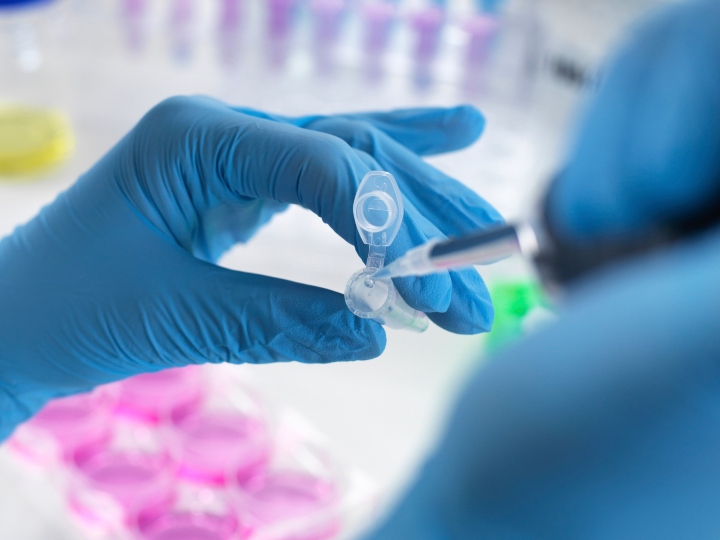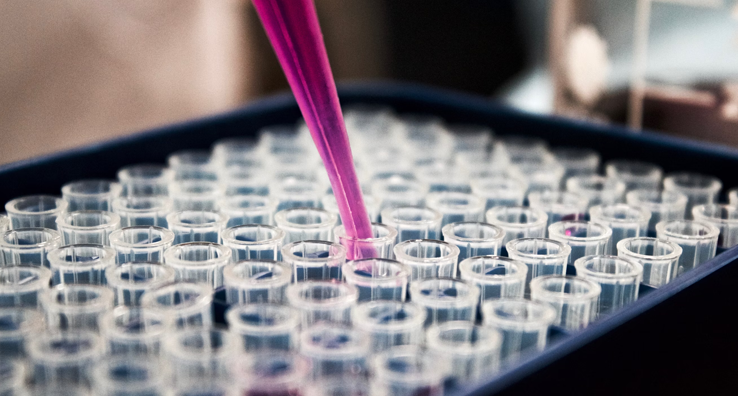Protein quantification, protein quantification methods, or total protein content by colorimetric methods such as absorbance at 280, Bradford or BCA assays and quantitative amino acid analysis from our protein quantification service team.
Protein quantification is necessary to understand the total protein content in a sample or in a formulated product. Accurate protein quantification is important as a range of other critical assays require precise total protein content results in order to generate data. Whilst measurement of the absorbance at 280 nm is the most direct assay method for protein concentration determination in solution, it can be open to errors associated with complex sample matrices, which might also absorb in the UV region and will complicate the assay. Colorimetric assays, for example, are dependent on the use of an external reference standard, and the different absorbance properties between the product and the reference standard may lead to inaccuracies. Quantitative amino acid analysis can also be used for protein content determination, but an understanding of how different proteins hydrolyze under similar conditions and the stability of amino acids during hydrolysis is critical. Fluorescent dye methods offer good sensitivity however requires specialist equipment.
Protein Quantification Methods
Our scientists are experts in the selection of protein quantification assays, including colorimetric protein quantification assays, which is underpinned by a deep knowledge of the physicochemical properties of proteins and amino acids. We address any potential source of variability in the accuracy of measurement of total protein content, delivering precise and robust data every time.
Our protein quantification service team provides a range of total protein quantification methods, including European Pharmacopoeia (EP) and United States Pharmacopeia (USP) methods. Colorimetric assays such as the Bradford assay or bicinchoninic acid (BCA protein quantification) assays measure UV-light absorbance and can be used to calculate protein concentration from the absorbance measurement, once the extinction coefficient (molar absorptivity) has been accurately established. Other protein quantification assays include absorbance at 280nm, Lowry assay and the Biuret assay. We also provide quantitative amino acid analysis by high performance liquid chromatography (HPLC) or ion chromatography (IC).
Our experts are also adept at determining the extinction coefficient (molar absorptivity) for a protein by determining the absorbance using UV/visible spectrophotometry of a solution of known protein content as determined by quantitative amino acid analysis or total nitrogen determination.
Accelerate Your Biologics Development with Expert Protein Quantification Laboratory Services
Protein quantification can be offered from our cGMP compliant laboratories as a standalone test or as part of a biologic release testing package for commercial release or a biopharmaceutical stability study test.
As your outsourcing partner for biologics or protein product development, our expertise in protein quantification methods and protein content can accelerate development timelines through delivering accurate and robust analytical services. Bringing quality and safety to life, we offer Total Quality Assurance expertise to help you to meet and exceed quality, safety and regulatory standards.
COVID-19 VACCINE OR THERAPEUTIC TESTING & DEVELOPMENT SUPPORT
IMMEDIATE QUESTION? Ask our experts now
FACTSHEET: COVID-19 Vaccine or Therapeutic Testing & Development Outsourcing
ARTICLE: Repurposing Vaccines for Intranasal Development
WEBINAR: Quality Control Strategy for Vaccine Development
WEBINAR: Repurposing Drugs for Inhaled Delivery
eBOOK: Contingency Outsourcing Solutions


Pharmaceutical News & Events
- Watch our RDD2024 Workshop on Generic Nasal Suspensions
- Determination of Particles in Pharmaceuticals - Article
- Discover our Audit Live Tool for direct access to our scheduled audits
- Extractables/Leachables Lab Tour - Request access
- Medical Device Extractables & Leachables Studies
- Glycosylation Analytical Approaches for Antibody Therapeutics
- Rapid Determination of Low/Trace Level Benzene in Pharmaceutical Excipients and Finished Products
- mRNA Analytics: Capping Efficiency, Sequencing, Poly-A Tail, dsRNA
ARTICLES
New Approaches to Bioassay Design
Characterisation of Bispecifics
The Significance and Challenges of Inhaled and Nasal Biologics
Current Analytical Approaches to Biophysical Characterisation
Biosimilar Characterisation and Immunogenicity
WHITEPAPER DOWNLOADS
Liposome Physicochemical Property Analysis
Formulation of Biologics for Inhaled and Nasal Delivery
The Complexities of Antibody Drug Conjugate Characterization
BROCHURES
Download: Intertek Biopharmaceutical Services Brochure
Download: Intertek Pharmaceutical Services

